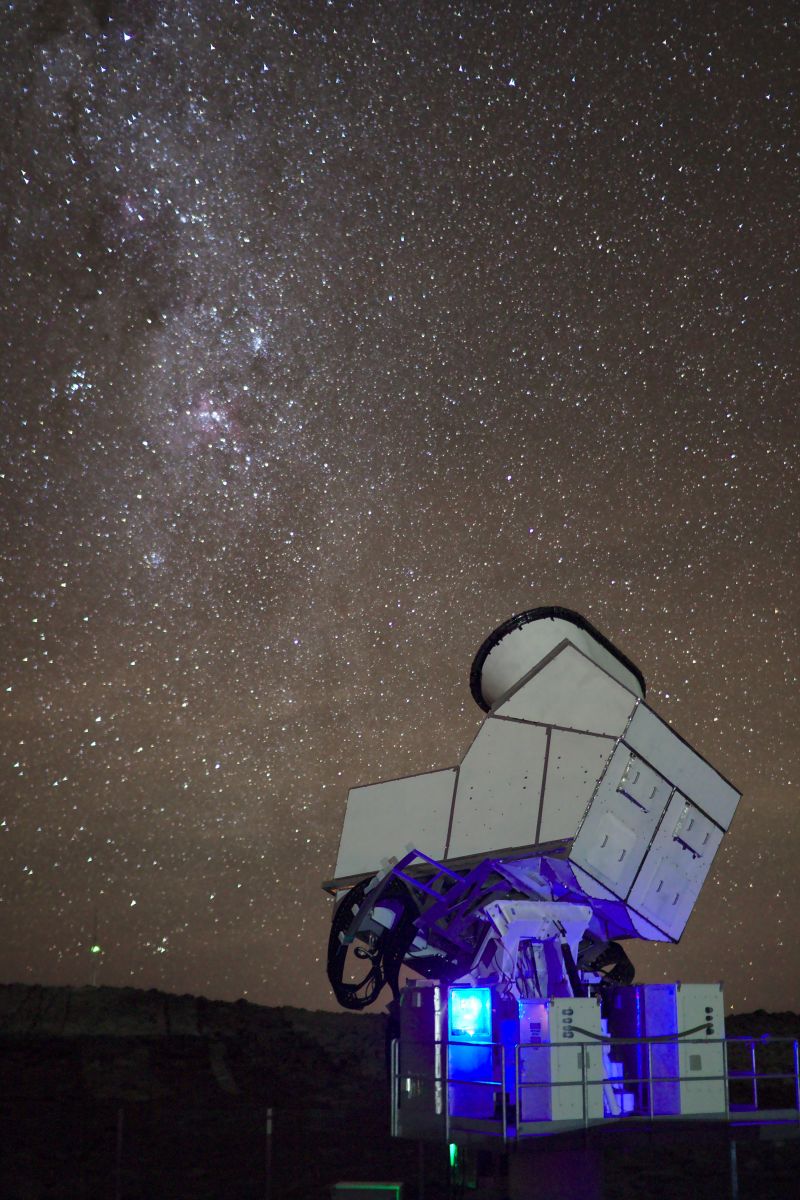
Light from dawn of the universe observed by Earth-based telescopes
For the first time, scientists have used Earth-based telescopes funded by the U.S. National Science Foundation to look back over 13 billion years and measure how the first stars in the universe affected light emitted from the Big Bang. Using the NSF Cosmology Large Angular Scale Surveyor (NSF CLASS) telescopes in northern Chile, astrophysicists have measured this polarized microwave light to create a clearer picture of one of the least understood epochs in the history of the universe, the cosmic dawn.
The NSF CLASS telescopes are uniquely designed to detect the large-scale fingerprints left by the first stars in the relic Big Bang light — a feat that previously had only been accomplished by instruments in space. The findings will help better define signals coming from the residual glow of the Big Bang, or the cosmic microwave background, and form a clearer picture of the early universe. The research is led by Johns Hopkins University and The University of Chicago and published in The Astrophysical Journal.
"No other ground-based experiment can do what NSF CLASS is doing," says Nigel Sharp, program director in the NSF Division of Astronomical Sciences, which has supported NSF CLASS for over 15 years. "The CLASS team has greatly improved measurement of the cosmic microwave polarization signal, and this impressive leap forward is a testament to the scientific value produced by NSF's long-term support."

Credit: Matthew Petroff
Cosmic microwaves are mere millimeters in wavelength and very faint, while polarization is what happens when light waves run into something and then scatter. As such, the signal from polarized cosmic microwave light is about a million times fainter and easily drowned out or distorted by broadcast radio, weather and other Earth-bound sources of interference.
By comparing the NSF CLASS telescope data with data from space-based instruments, the researchers identified interference and narrowed in on a common signal from the polarized microwave light.
"When light hits the hood of your car and you see a glare, that's polarization. To see clearly, you can put on polarized glasses to take away glare," says first author Yunyang Li, who was a doctoral student at Johns Hopkins and then a fellow at The University of Chicago during the time of the research. "Using the new common signal, we can determine how much of what we're seeing is cosmic glare from light bouncing off the hood of the cosmic dawn, so to speak."
After the Big Bang, the universe was a fog of electrons so dense that light energy was unable to escape. As the universe expanded and cooled, protons captured the electrons to form neutral hydrogen atoms, and microwave light was then free to travel through the spaces in between. When the first stars formed during the cosmic dawn, their intense energy ripped electrons free from the hydrogen atoms. The research team measured the probability that a photon from the Big Bang encountered one of the freed electrons on its way through the cloud of ionized gas and skittered off course.
"People thought this couldn’t be done from the ground. Astronomy is a technology-limited field, and microwave signals from the cosmic dawn are famously difficult to measure," says Tobias Marriage, CLASS project leader, Johns Hopkins professor of physics and astronomy and NSF Faculty Early Career Development Program awardee. "Ground-based observations face additional challenges compared to space. Overcoming those obstacles makes this measurement a significant achievement."
Distribution channels: Science
Legal Disclaimer:
EIN Presswire provides this news content "as is" without warranty of any kind. We do not accept any responsibility or liability for the accuracy, content, images, videos, licenses, completeness, legality, or reliability of the information contained in this article. If you have any complaints or copyright issues related to this article, kindly contact the author above.
Submit your press release